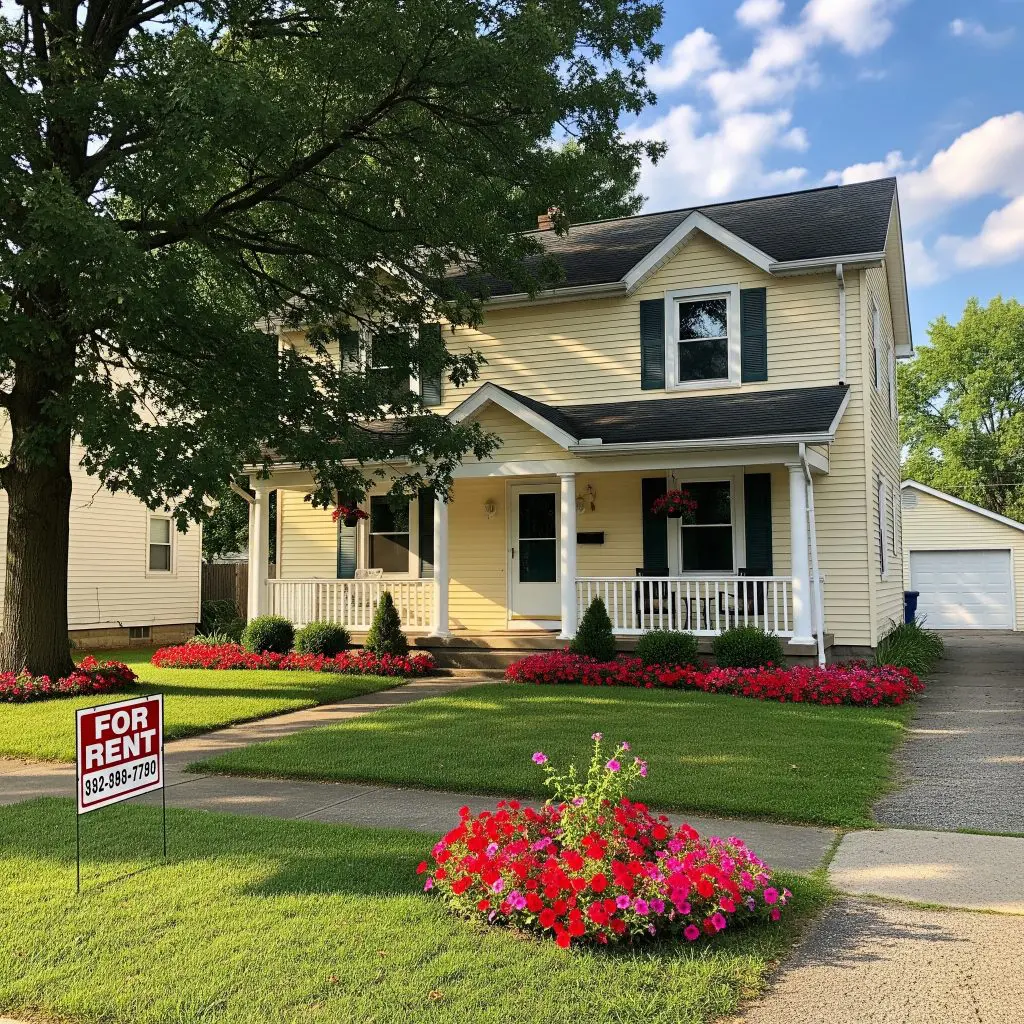Cleveland – September 18, 2025: Navigating the world of real estate investment can be both exhilarating and overwhelming. The single most important factor that determines the long-term success of a rental property is its ability to generate consistent, positive cash flow. Without it, an investment can quickly become a financial burden, regardless of its appreciation potential.
This comprehensive guide will show you exactly how to analyze a rental property deal for cash flow, providing you with the critical tools and metrics needed to make a smart, data-driven investment. We’ll break down the formulas, discuss key market insights, and introduce you to GHC Funding, a trusted financial partner that offers specialized loans designed for investors focused on cash flow.
How to Analyze a Rental Property Deal:
- The Blueprint for Cash Flow Analysis
- The Ohio Advantage: A Cash Flow Investor's Dream
- Financing for Cash Flow: The GHC Funding DSCR Loan
- External Resources for Ohio Real Estate Investors
- Q&A: Your Cash Flow Questions Answered
- 1. What is a "good" cash flow for a rental property?
- 2. How is a DSCR loan different from a conventional loan?
- 3. What if a property doesn't meet the DSCR ratio?
- 4. Can I use a DSCR loan for a brand-new rental property?
- 5. What's the best way to estimate my repair and maintenance costs?
- 6. Do DSCR loans have prepayment penalties?
- 7. Is cash flow more important than appreciation?
- Your Next Step: From Analysis to Acquisition
- Get a Rental Analysis (and Loan) in Ohio.

The Blueprint for Cash Flow Analysis
Analyzing a rental property’s cash flow is a straightforward process that moves beyond a simple “rent minus mortgage” calculation. It requires a meticulous examination of all potential income and expenses. Here’s your step-by-step blueprint:
- Calculate Gross Monthly Income (GMI): This is the total amount of money the property is expected to generate. It includes not just monthly rent, but also any additional income streams like laundry fees, parking fees, or pet fees.
- Estimate Monthly Operating Expenses: This is where many new investors make a critical mistake by underestimating costs. Your expenses include:
- PITI: Principal, Interest, Taxes, and Insurance. This is your monthly mortgage payment.
- Vacancy: Always budget for vacancy. A conservative estimate is typically 5-10% of your gross income, depending on the local market.
- Property Management: If you plan to hire a manager, budget for their fee, usually 8-12% of the monthly rent.
- Maintenance & Repairs: A good rule of thumb is to set aside 5-10% of the GMI for unexpected repairs and routine maintenance.
- Capital Expenditures (CapEx): These are long-term, expensive repairs like a new roof or HVAC system. It’s crucial to budget for these by setting aside a small amount each month.
- HOA Fees: If the property is a condo or part of an association, don’t forget these monthly fees.
- Calculate Net Operating Income (NOI): This is your GMI minus all of your operating expenses excluding your mortgage payment. The formula is simple: NOI = GMI – All Operating Expenses (excluding P&I).
- Determine Monthly Cash Flow: Now, subtract your monthly mortgage payment (Principal & Interest) from your NOI. The result is your monthly cash flow. A positive number is what you’re looking for, but a strong cash flow should be your goal.
A popular shortcut is the 1% Rule, which states that the monthly rent should be at least 1% of the purchase price. While a quick filter, it’s not a substitute for a detailed cash flow analysis.
DSCR Loan IQ Quiz!

Test your knowledge of Debt Service Coverage Ratio (DSCR) loans!
The Ohio Advantage: A Cash Flow Investor’s Dream
Ohio’s diverse economy, affordable property prices, and stable rental markets make it a prime location for investors focused on cash flow. By incorporating a geo-targeting strategy, you can pinpoint the best investment opportunities in the state.
- Cleveland: With major economic drivers in healthcare (Cleveland Clinic) and manufacturing, Cleveland offers an opportunity to acquire affordable multi-family properties. The neighborhoods of Ohio City (zip code 44113) and Tremont (zip code 44113), with their proximity to downtown and unique character, are ideal for rental properties with strong cash flow potential.
- Columbus: As the state capital and home to Ohio State University, Columbus has a steady influx of students and young professionals. Areas like Franklinton (zip code 43223) and Olde Towne East (zip code 43205) are experiencing revitalization, offering excellent opportunities for single-family rentals and duplexes with strong cash flow.
- Cincinnati: Situated on the Ohio River, Cincinnati’s market is supported by Fortune 500 companies and a growing tech scene. Focus on cash flow in areas like Northside (zip code 45223) and Pleasant Ridge (zip code 45213), where you can find older, well-built homes perfect for long-term rentals.
- Dayton: Often considered a hidden gem, Dayton’s low cost of entry and aerospace industry presence make it attractive for investors. Look for deals in neighborhoods like South Park (zip code 45409), where you can acquire single-family homes at a price point that supports excellent cash flow.
Financing for Cash Flow: The GHC Funding DSCR Loan
Once you’ve identified a cash-flowing property, the next step is to secure the right financing. This is where GHC Funding excels. Our DSCR (Debt Service Coverage Ratio) Loans are specifically designed for investors who prioritize cash flow. Unlike traditional mortgages, which focus heavily on your personal income and debt, a DSCR loan underwrites the loan based on the property’s ability to generate cash flow.
Current Market Insights (as of September 18, 2025):
- Interest Rates: DSCR loan rates are typically higher than conventional owner-occupied mortgage rates but are competitive for investment property financing. Expect rates to range from 7.25% to 9.50%. Rates are influenced by:
- DSCR: A higher DSCR (e.g., 1.25x or above) can result in a more favorable rate.
- Loan-to-Value (LTV): A lower LTV (higher down payment) often leads to better terms. Most lenders cap DSCR loan LTVs at 75-80%.
- Credit Score: While not the primary focus, a strong credit score (generally 660+) is a key factor.
Loan Requirements and Benefits:
- No Personal Income Verification: Our DSCR loans don’t require you to provide personal tax returns, W-2s, or pay stubs. This allows you to scale your portfolio without hitting the debt-to-income (DTI) limitations of conventional financing.
- Focus on the Property: The loan’s approval is based on the property’s cash flow potential, making it a perfect fit for investors who have a solid property but may have complex personal finances.
- Entity Lending: DSCR loans are typically made to an LLC or other business entity, providing crucial legal protection and separating your personal assets from your investment properties.
- Broad Property Eligibility: We finance single-family homes, multi-family properties (up to 4 units), and even short-term rentals, giving you the flexibility to invest in various property types.
GHC Funding is your go-to partner for this type of financing. We understand the Ohio market and offer flexible underwriting and a streamlined process to help you close on cash-flowing deals quickly. Our expertise extends beyond DSCR loans to include SBA 7a loans, SBA 504 Loans, Bridge Loans, and other forms of Alternative Real Estate Financing for a variety of investment scenarios.
External Resources for Ohio Real Estate Investors
To further assist your due diligence and networking, here are some helpful external resources for the Ohio market:
- Ohio Association of Realtors (OAR): While a resource for real estate professionals, their market data, reports, and industry insights are invaluable for investors to stay ahead of trends. https://ohiorealtors.org/
- Ohio Real Estate Investors Association (OREIA): Joining a local REIA is one of the best ways to network, find off-market deals, and learn from other successful investors in your area. https://www.ohioreia.com/
- Ohio Development Services Agency (ODSA): This agency can provide data on housing programs and community development, offering insights into potential investment areas and local market needs. https://www.development.ohio.gov/
- Local County Auditor Websites: These public sites, such as the Franklin County Auditor’s Office in Columbus, are essential for researching property tax records, ownership history, and property values.
Quiz on Ohio Rental Property Laws

This quiz will test your knowledge of the essential laws and regulations for owning and managing an Ohio rental property. Understanding these rules is crucial for protecting your investment and ensuring a smooth tenancy.
Q&A: Your Cash Flow Questions Answered
1. What is a “good” cash flow for a rental property?
A “good” cash flow depends on your investment goals and risk tolerance. Generally, a positive cash flow of at least $150-$200 per month per door is considered healthy. However, a strong cash flow property will generate even more, providing a greater cushion for unexpected expenses and a higher return on investment.
2. How is a DSCR loan different from a conventional loan?
A DSCR loan is a business-purpose loan that qualifies the property, not the borrower. Conventional loans, in contrast, are for owner-occupied homes and have strict DTI requirements that can limit how many properties an investor can finance. A DSCR loan allows you to grow your portfolio by focusing on the performance of each asset.
3. What if a property doesn’t meet the DSCR ratio?
If a property’s income doesn’t meet the required DSCR, it may be a poor investment or a deal that requires a larger down payment. For properties that need a little push to become cash-flowing, GHC Funding offers Bridge Loans to help with renovations or to “bridge” the financing until you can stabilize the property and refinance into a long-term DSCR loan.
4. Can I use a DSCR loan for a brand-new rental property?
Yes. GHC Funding can underwrite a DSCR loan for a vacant property based on a professional rent appraisal. This allows you to purchase a vacant property, find a tenant after closing, and start generating cash flow.
5. What’s the best way to estimate my repair and maintenance costs?
For a rough estimate, you can use the 50% Rule which suggests that 50% of your gross rental income will be spent on operating expenses, excluding your mortgage payment. For a more accurate projection, talk to a local property manager or home inspector to get a realistic sense of typical costs in your area.
6. Do DSCR loans have prepayment penalties?
Many DSCR loans do have prepayment penalties, but this varies by lender and loan product. It’s important to discuss the terms with your GHC Funding loan officer to ensure the loan aligns with your long-term investment strategy.
7. Is cash flow more important than appreciation?
For most investors, especially those seeking financial freedom, cash flow is king. Appreciation is a long-term goal that is never guaranteed. Cash flow, however, provides a reliable income stream that can be used to pay down debt, cover unexpected expenses, and reinvest in new deals, regardless of market conditions.
Your Next Step: From Analysis to Acquisition
Analyzing a rental property deal for cash flow is the most crucial skill you can develop as a real estate investor. It separates the hobbyist from the professional and ensures your investments are building, not eroding, your wealth. With the right analysis and a trusted financial partner, you can confidently acquire properties that put money in your pocket every single month.
Are you ready to turn a great deal into a profitable investment? Contact GHC Funding today. Visit www.ghcfunding.com to learn more about our investor-friendly loan programs or call us at 833-572-4327. Let’s get your next cash-flowing property funded.

